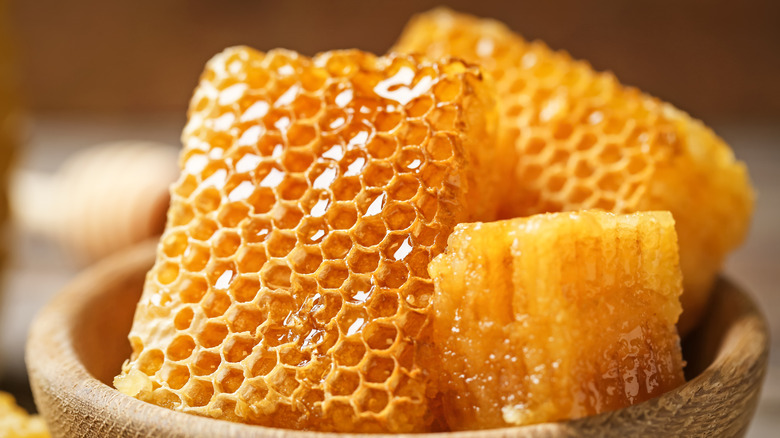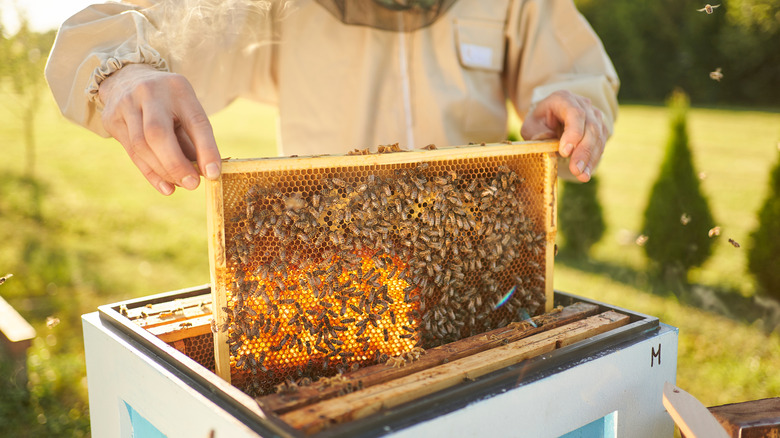You'll Probably Never Guess What Honey Actually Is
Honey is an attractive kind of food for sure. It's sweet like syrup and gold as sunlight, and it is easy to imagine why ancient humans were enamored with honey, and why we still are to this day. It is a natural sweetener made entirely from nature, making it seem purer than refined sugar, molasses, and agave which all must be heavily processed to enjoy. But honey has existed much longer than humanity's ability to make sugars. The Honey Association reports that Spanish cave paintings, some of the oldest forms of human storytelling and communication, were found dating back to 7000 B.C. detailing a beekeeping history. By 2400 B.C., hives were being erected in Cairo. But bees themselves have existed for over a million years.
Today, odds are that you know honey comes from bees' hard work, but you buy your stuff from the supermarket already jarred, pasteurized, and sorted into different types of honey ready for eating. Truly very few of us who drizzle honey into our cocktails, over our toast or tea, are involved in harvesting honey from their source. That means that even though many people can accurately tell you that honey comes from bees, they can tell you very little else; perhaps a few mumbled words about nectar or a honeycomb are thrown around but honey making is so much more complicated than that.
Chemists in their own right
Bees are fantastic pollinators. As they fly from one plant to another, they spread pollen wherever they land. But they aren't doing so out of the kindness of their hearts or because they know the world would fall apart without them. They really travel to collect nectar. Flowers are beautiful-looking things, and they are also sweet, producing a sugary substance that bees harvest through their tongues and store the extra in their "crop" stomach (via Live Science). Inside the bee, a chemical process begins.
Honey is, according to Bee Culture, viscous and has low water content. Nectar, on the other hand, is mostly water and must interact with a bee's enzymes in their salivary glands to chemically change nectar's complex sugar into simple sugar. Honey bees then — and there really isn't a more polite way to say this — regurgitate the nectar into a honeycomb. Honey Association states that the honeycomb is designed to help dry out the nectar and is aided by the bees literally fanning it with their wings. By working to evaporate the excess water in the chemical-altered nectar, honey is created.

